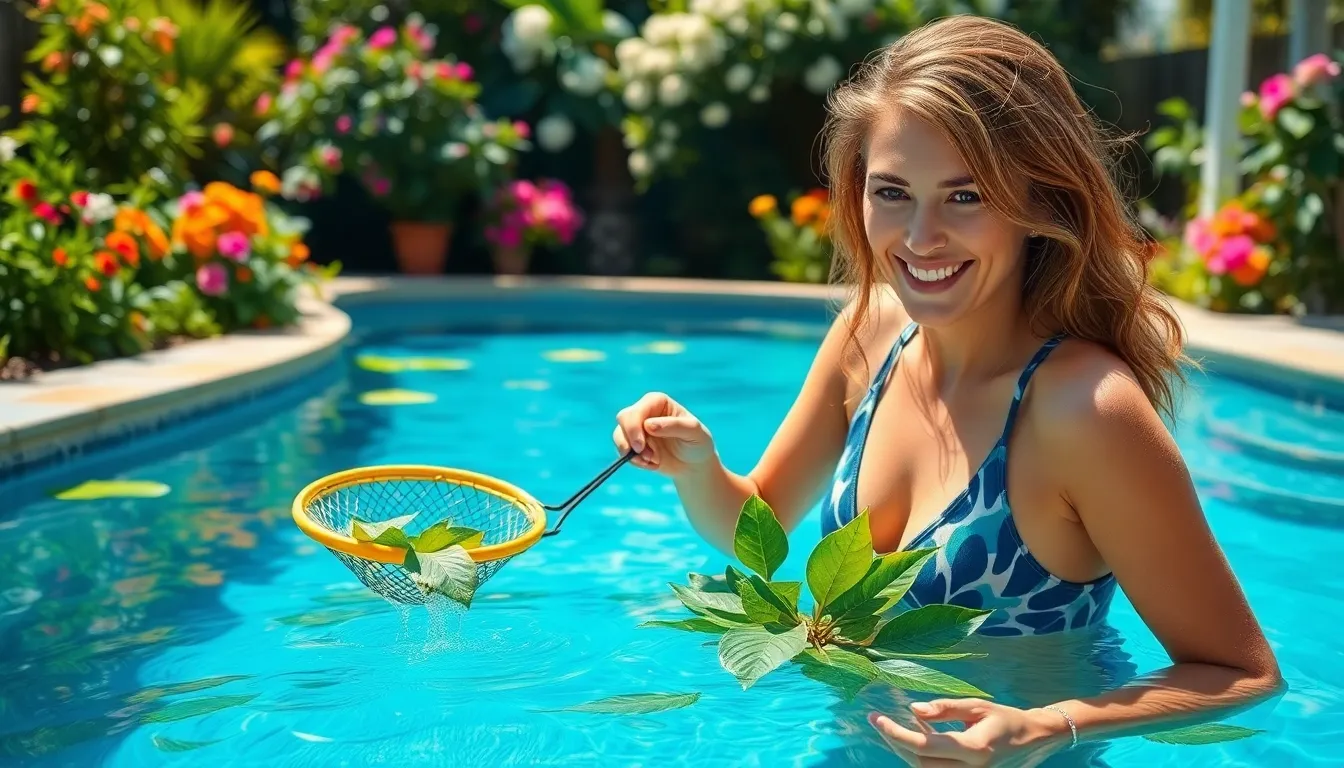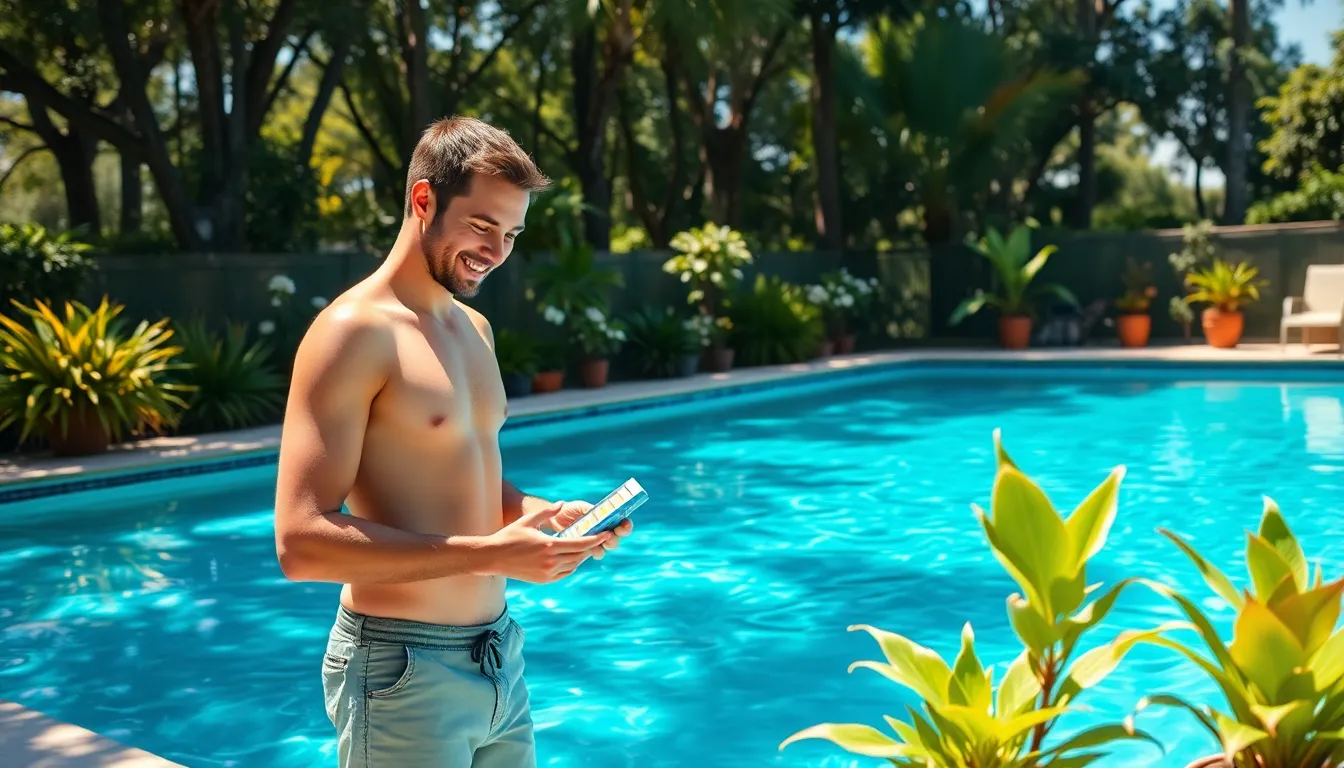A sparkling pool is a backyard oasis, but when it turns green, it becomes a source of frustration. Algae blooms not only ruin the aesthetic but can also pose health risks. Understanding how to tackle this issue is crucial for pool owners who want to maintain a safe and inviting swimming environment.
Green pool solutions go beyond just adding chemicals. They encompass a holistic approach that includes proper maintenance, eco-friendly products, and innovative techniques. By exploring these solutions, pool owners can restore their pools to pristine condition while also promoting sustainability. This guide dives into effective strategies that ensure your pool remains crystal clear, all while being kind to the environment.
Table of Contents
ToggleOverview of Green Pool Solutions
Green pool solutions focus on eco-friendly methods for combating algae and maintaining clear water. These solutions prioritize health, safety, and sustainability while ensuring pool owners can enjoy their pools year-round.
- Regular Maintenance: Implement weekly cleaning schedules that include skimming, brushing, and vacuuming. Regularly test water chemistry to maintain proper pH levels between 7.2 and 7.8.
- Eco-Friendly Chemicals: Use biodegradable and non-toxic products. Organic algaecides specifically target algae without harming pool surroundings.
- Natural Pool Sanitation: Consider using saltwater systems as an alternative to traditional chlorine. Saltwater systems reduce chemical dependency and create a gentler swimming experience.
- Plant Filters: Explore natural filtration methods, such as incorporating aquatic plants. These plants can naturally filter impurities, promote biodiversity, and enhance pool aesthetics.
- Innovative Technologies: Leverage advanced pool technologies like UV-C and ozone systems. These methods neutralize pathogens effectively while reducing chlorine use, leading to a healthier swimming environment.
- Cover and Shade Solutions: Use pool covers during off-seasons to minimize debris accumulation. Install shaded areas to decrease sunlight exposure, which can significantly inhibit algae growth.
Implementing these green pool solutions cultivates a cleaner, safer pool environment while fostering sustainable practices for long-term pool care.
Benefits of Green Pool Solutions

Green pool solutions offer numerous advantages that extend to environmental health and personal well-being. By prioritizing eco-friendly practices, pool owners contribute to a cleaner planet while enjoying a safe swimming experience.
Environmental Impact
Green pool solutions significantly reduce environmental harm. These methods minimize chemical runoff, which can contaminate local waterways and harm aquatic ecosystems. Utilizing non-toxic cleaning agents helps maintain freshwater sources, promoting biodiversity. Implementing natural filtration systems, such as wetlands or aquatic plants, enhances water quality naturally, without relying on harsh chemicals. Additionally, energy-efficient technologies, like solar pool heaters, decrease fossil fuel dependency. Overall, choosing sustainable practices creates a positive ripple effect on the environment.
Health Advantages
Green pool solutions prioritize health by ensuring cleaner, safer swimming conditions. Non-toxic chemicals reduce the risk of skin irritation, respiratory issues, and allergic reactions, fostering a more pleasant swimming experience. Natural filtration methods eliminate harmful bacteria and improve water clarity. Saltwater systems, for instance, produce softer water without the harsh effects of chlorine, offering a gentler alternative. Regular maintenance and eco-friendly practices also promote better water hygiene, which benefits swimmers’ overall well-being. Emphasizing safety minimizes health risks associated with traditional pool maintenance methods.
Common Green Pool Solutions
Pool owners can adopt several eco-friendly strategies to combat algae and maintain crystal-clear water. Implementing these solutions fosters a healthy swimming environment while promoting sustainability.
Natural Filtration Systems
Natural filtration systems provide an effective way to maintain pool clarity using biological processes. These systems often incorporate aquatic plants, which absorb nutrients and pollutants, thus significantly reducing algae growth. Systems like bio-filters can utilize beneficial bacteria that break down organic matter. Utilizing natural methods decreases reliance on harmful chemicals, promoting biodiversity. Examples include constructing a natural swimming pool with a regeneration zone, which includes gravel and plants to filter and purify water.
Chemical-Free Alternatives
Chemical-free alternatives focus on maintaining water quality without synthetic substances. Saltwater chlorination is a popular option; it generates chlorine naturally through the electrolysis of saltwater, vastly diminishing chemical use. Another effective approach is using mineral sanitizers, which introduce minerals like copper and silver that inhibit algae growth. Enzyme-based products also improve water clarity by breaking down organic contaminants. These methods prioritize safe swimming experiences while protecting the environment.
Maintenance of Green Pools
Maintaining a green pool requires consistent attention to detail and proactive strategies. This section highlights essential upkeep practices and addresses potential challenges pool owners may face.
Regular Upkeep
Regular upkeep is crucial for the health of a green pool. It involves routine tasks such as:
- Cleaning debris: Remove leaves, twigs, and dirt using a skimmer or pool vacuum to prevent algae formation.
- Testing water: Conduct chemical tests weekly to monitor pH, alkalinity, and chlorine levels to ensure optimal water conditions.
- Brushing surfaces: Brush walls and floors twice a week to dislodge algae and prevent buildup on the pool’s surfaces.
- Maintaining equipment: Check filters and pumps regularly to ensure they function efficiently and replace parts as necessary.
Implementing these tasks consistently helps maintain water clarity and reduces the likelihood of algae resurgence.
Troubleshooting Common Issues
Addressing common issues promptly can prevent larger problems in green pool maintenance. Here are effective strategies:
- Algae growth: If algae appears, shock the pool with a non-toxic algaecide or increase chlorine levels to kill off growth quickly.
- Cloudy water: Cloudiness often indicates an imbalance in chemicals or insufficient filtration. Adjust water chemistry and consider running the filter continuously until clarity improves.
- Unpleasant odors: Bad smells may stem from organic debris or poor circulation. Clear debris promptly and check pump and filter performance.
- Staining: Stains on surfaces may require specific treatments, such as using Vitamin C tablets or specialized cleaners to remove metals or organic matter.
These troubleshooting steps ensure green pools remain inviting and healthy for users while maintaining eco-friendly practices.
Cost Considerations
Costs associated with green pool solutions can vary considerably based on several factors. Understanding these factors helps pool owners make informed decisions.
Initial Setup Costs
- Natural Filtration Systems: Installing systems using aquatic plants and beneficial bacteria requires an investment ranging from $1,000 to $5,000, depending on pool size and system complexity.
- Saltwater Systems: Converting to a saltwater chlorinator involves initial costs between $1,500 and $3,000 for equipment and installation.
- Mineral Sanitizers: These typically range from $400 to $1,200, contingent on the pool’s dimensions.
Ongoing Maintenance Costs
- Chemical Alternatives: Using biodegradable and non-toxic chemicals may incur monthly costs of $30 to $100, which vary based on pool size and water quality.
- Regular Equipment Maintenance: Annual servicing of eco-friendly systems can run from $200 to $500, primarily depending on local service rates and system type.
- Energy Savings: Natural filtration and saltwater systems can reduce energy costs, potentially lowering electricity expenses by 20% to 50%.
Long-Term Savings
- Reduced Chemical Dependency: Green solutions often lead to lower chemical purchases, translating to significant savings over time.
- Increased Equipment Lifespan: Eco-friendly methods can extend the lifespan of pool equipment, resulting in decreased replacement frequency and costs.
While initial investments may be higher for green pool systems, long-term savings and benefits to health and the environment frequently outweigh initial costs.
Embracing green pool solutions not only enhances the beauty and safety of swimming pools but also supports environmental sustainability. By implementing eco-friendly practices and innovative technologies, pool owners can effectively combat algae growth while minimizing chemical use.
Regular maintenance and the adoption of natural filtration systems contribute to clearer water and healthier swimming conditions. Investing in these sustainable methods may require an initial commitment but leads to long-term benefits for both personal well-being and the planet.
Ultimately, prioritizing green solutions fosters a cleaner and safer aquatic environment, ensuring that pool owners can enjoy their outdoor spaces with peace of mind.


